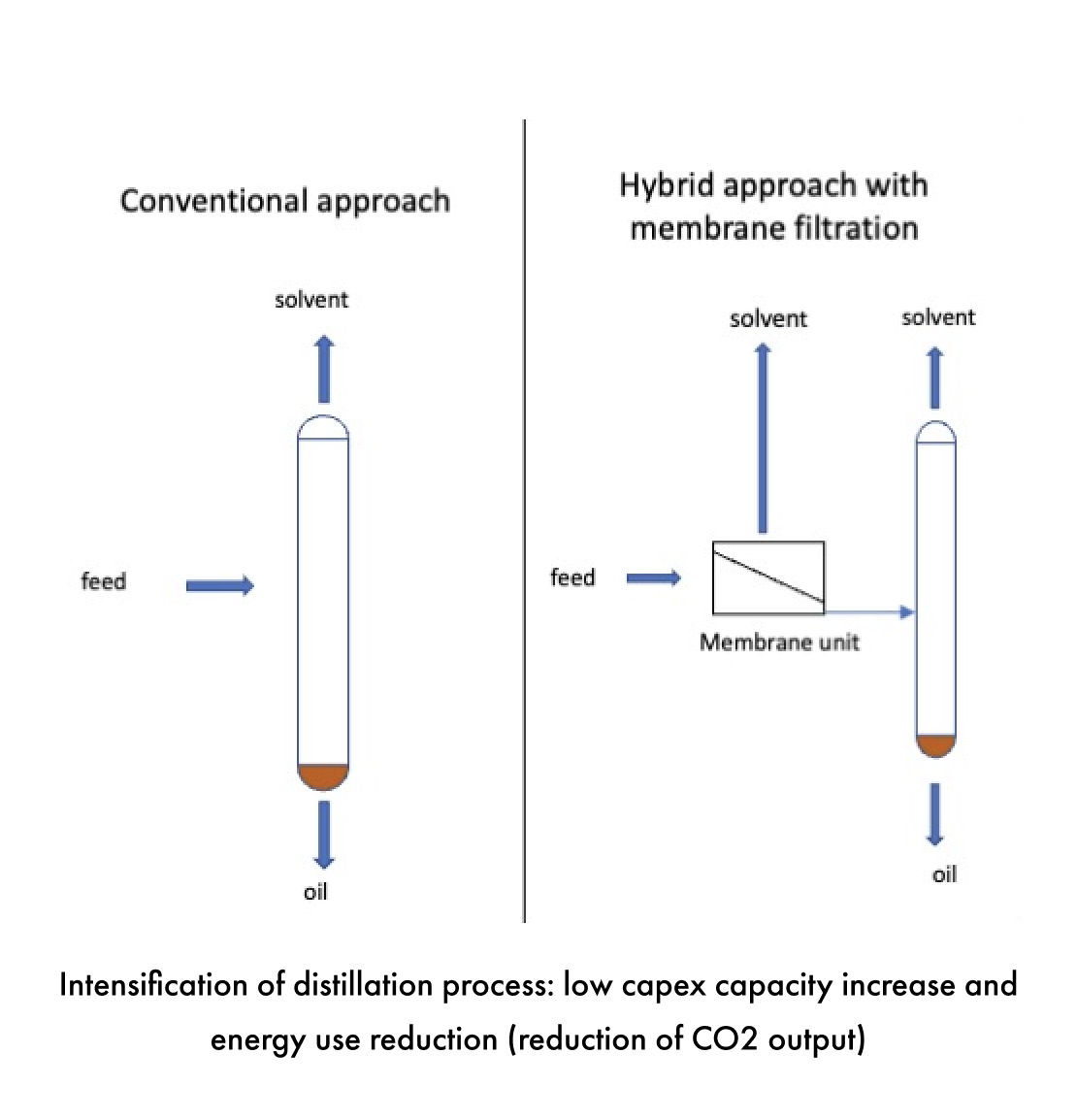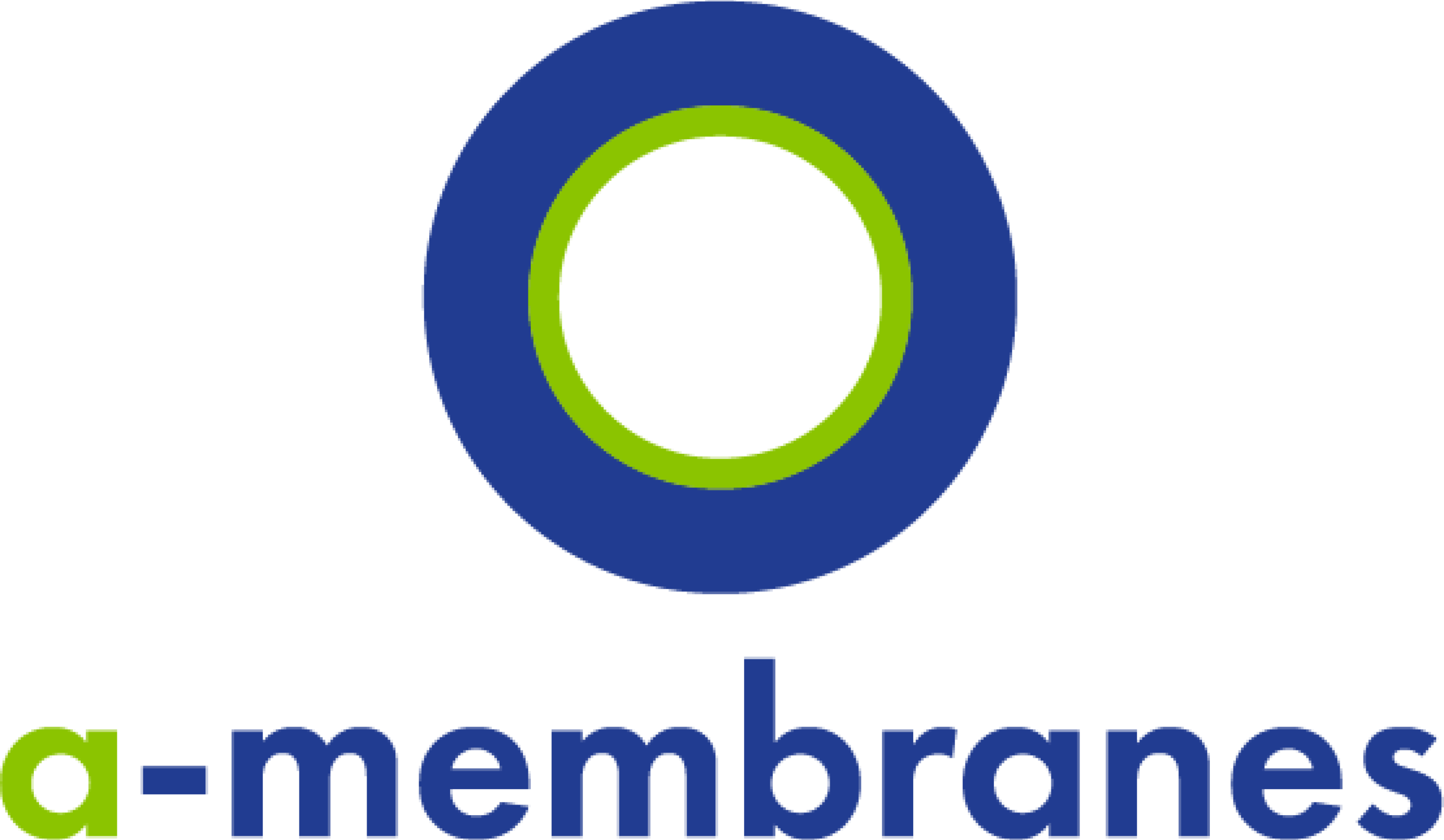Cases

Tuning the membrane-solvent-solute affinity to the needs of the customers’ separation challenge leads to a performance increase. New separation processes become possible by membrane filtration and others become more efficient. A-membranes expand membrane filtration from a pure size-based separation process to an affinity-based separation process.

Increased performance in organic solvent nanofiltration
This example details the pilot test run at an international producer of edible oils. In the framework of the EEMBAR and ISRO projects (funded by ISPT/RVO), nanofiltration A-membranes have proven to efficiently separate acetone from oils. Acetone is necessary in the production process to separate hard and soft fractions from the oil. But no acetone may remain in the final product. In addition, solvent recovery is a must from an economic perspective. Currently, almost all acetone is recovered with an efficient but very energy-intensive distillation process. Initially membranes did not appear to be an option since the acetone would corrode them after a few hours. Because of the stability of our grafted membranes, our products were tested. Filtering the feed over our grafted membranes before the existing distillation process, made it possible to split off a part of the acetone and send a mixture richer in oil to the distillation column. This is not only a flexible capacity enhancement at low costs (capex and opex) but realises a significant reduction of the carbon footprint as well. In this case we had a carbon footprint reduction of 50% per produced output.
The installation has been running at the customer’s factory at full capacity for over two years, using 120 cm long 19-channel grafted A-membranes.

